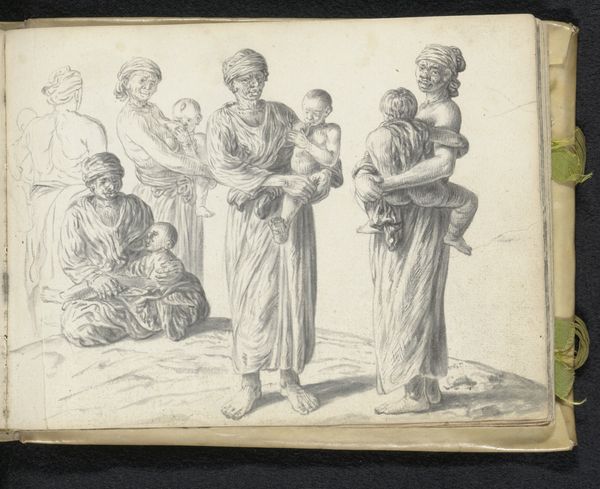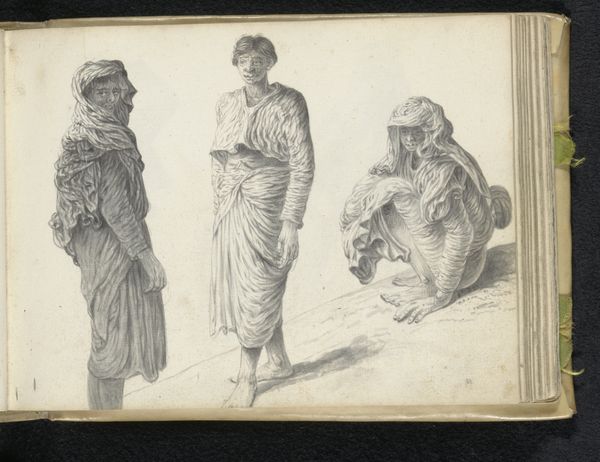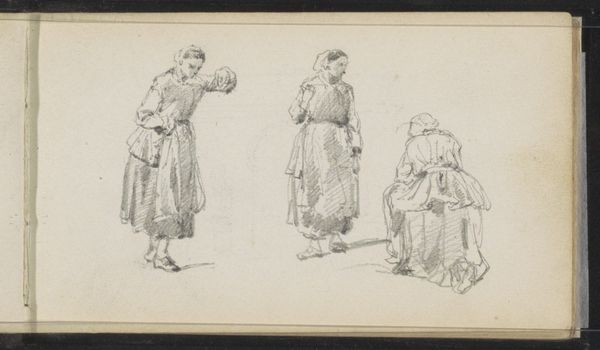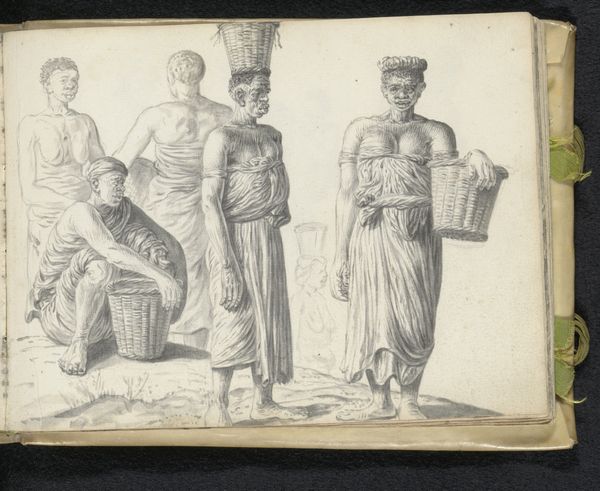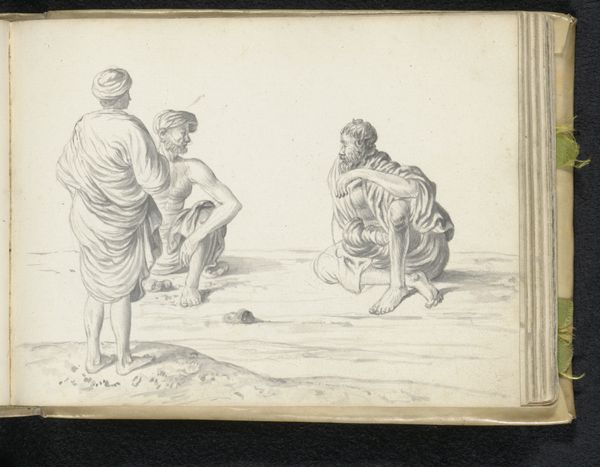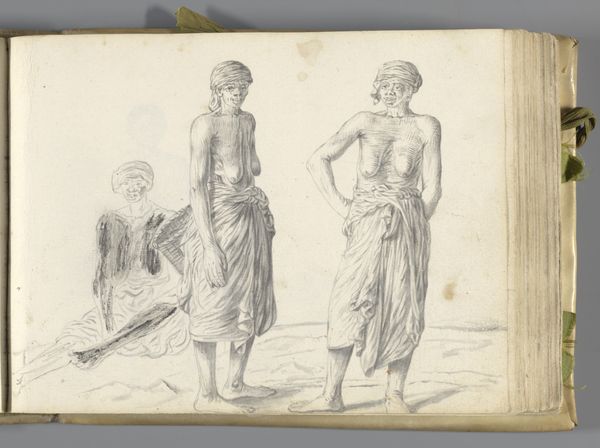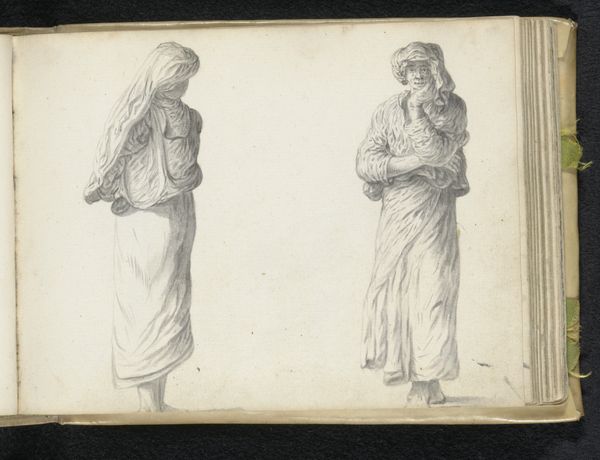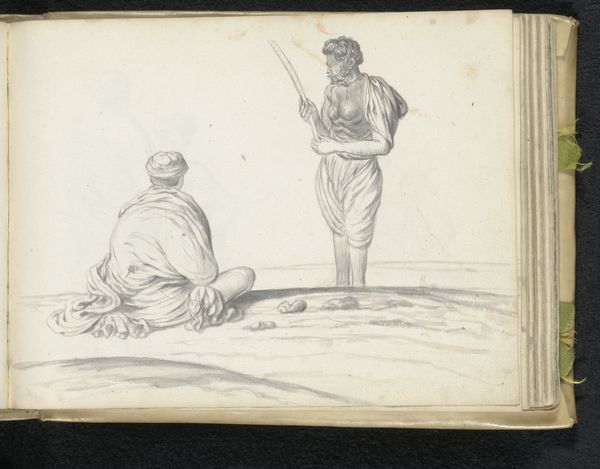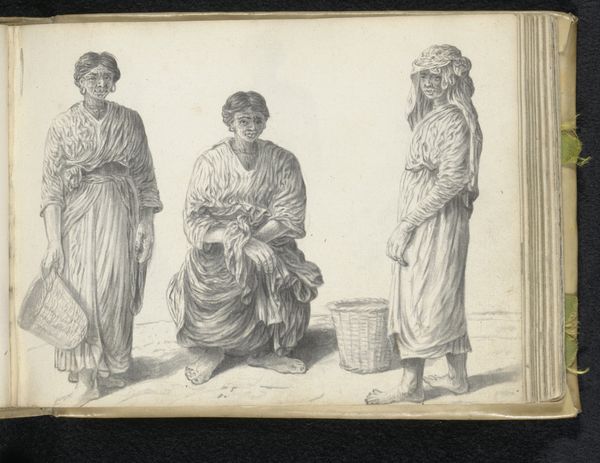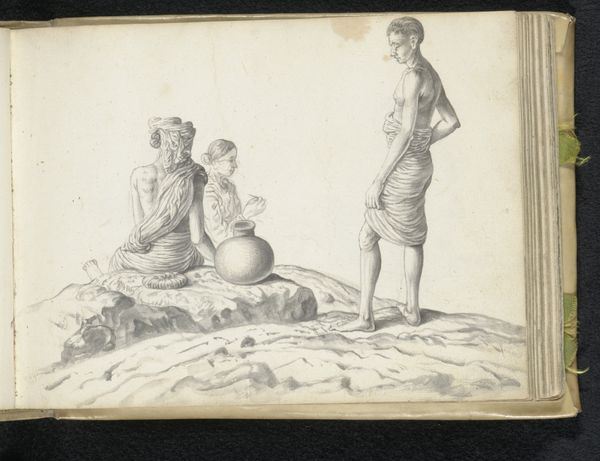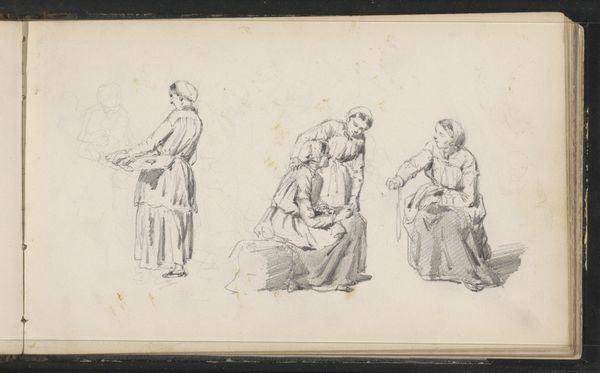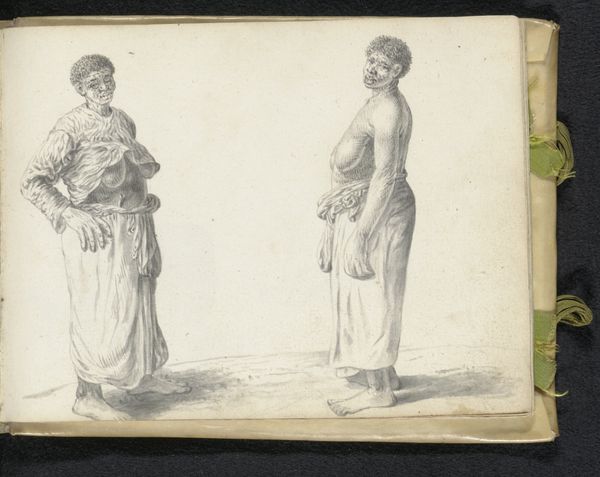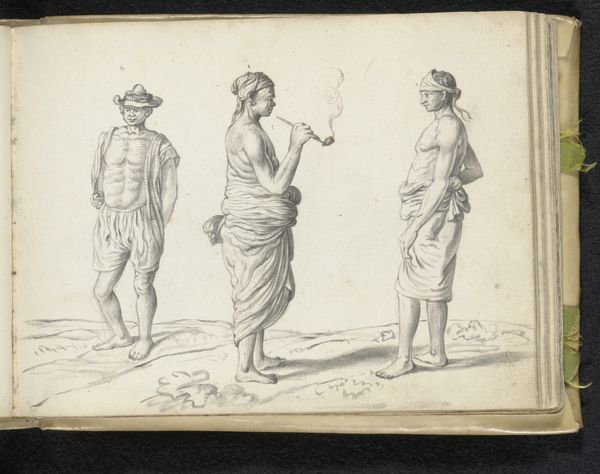
drawing, paper, pencil
#
portrait
#
drawing
#
dutch-golden-age
#
figuration
#
paper
#
coloured pencil
#
pencil
#
genre-painting
#
realism
Dimensions: height 148 mm, width 196 mm
Copyright: Rijks Museum: Open Domain
Editor: This drawing, "Five Women" by Esaias Boursse from 1662, is rendered simply with pencil and possibly colored pencil on paper. It has a certain detached feel to it. How would you interpret this work? Curator: The detachment, as you call it, may be precisely the point. Boursse is not merely depicting figures but presenting a social tableau imbued with the symbolic weight of Dutch Golden Age society encountering "the other" during a period of intense trade and colonialism. Note the gaze, or lack thereof. Editor: Interesting! I didn't immediately connect it to colonialism. Are you referring to the figures on the left versus the one standing alone on the right? Curator: Precisely. Consider the visual weight given to water-carrying, a task often relegated to women in many cultures, then consider how the solitary figure looks away. Dutch Golden Age art often encodes moral messages through these types of symbolic arrangements. The very act of depicting these women becomes a commentary. Do you see anything in their postures that reveals the relationship of Dutch traders with the colonies? Editor: I see how the figure on the right seems more formal, reserved even, while the group is posed in what appears like an ordinary activity of the time. Curator: Right, it highlights that distinction. Consider, too, that the figures represent a larger narrative. Every detail – their clothes, the water jug, their posture, is a signifier for something bigger. Editor: So, it is not just a depiction of daily life but carries complex cultural symbolism about cross-cultural encounters. I'll definitely look closer at Dutch Golden Age paintings moving forward. Curator: Indeed. Remember, every image tells a story if we learn how to read the signs.
Comments
No comments
Be the first to comment and join the conversation on the ultimate creative platform.
